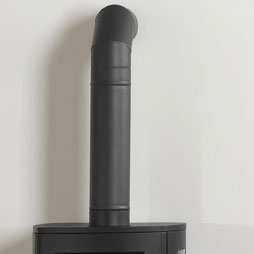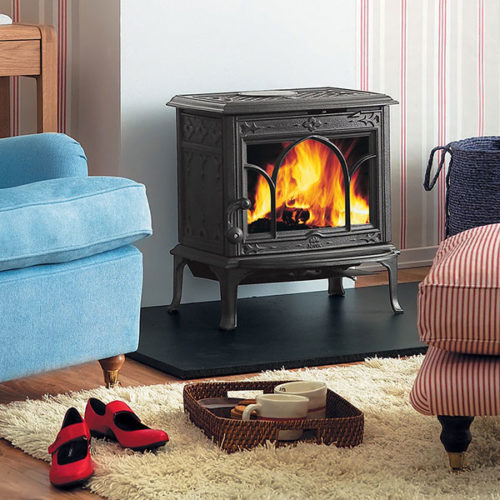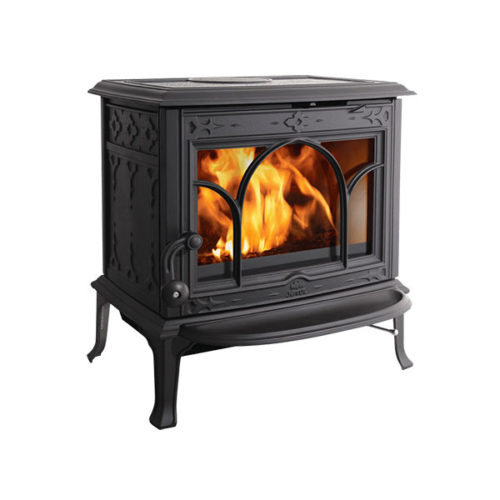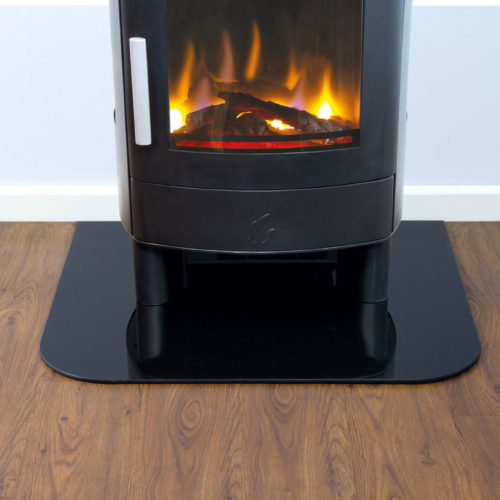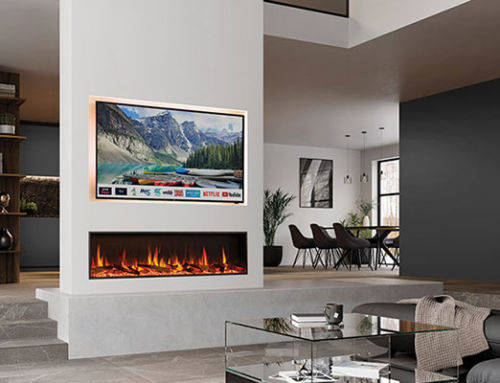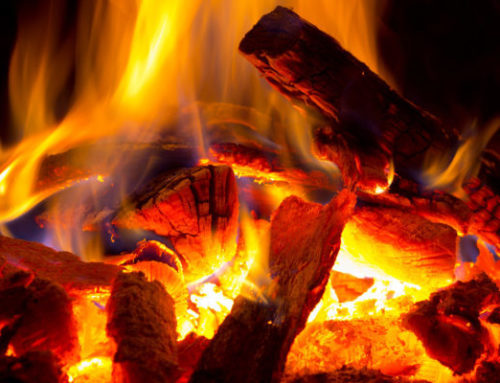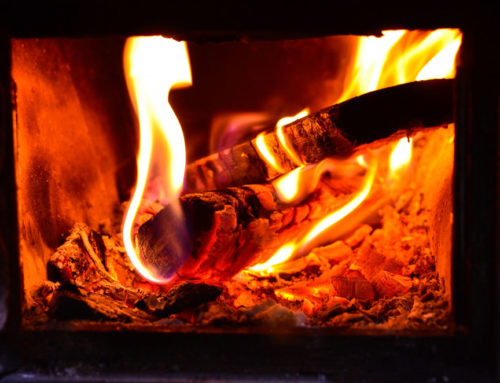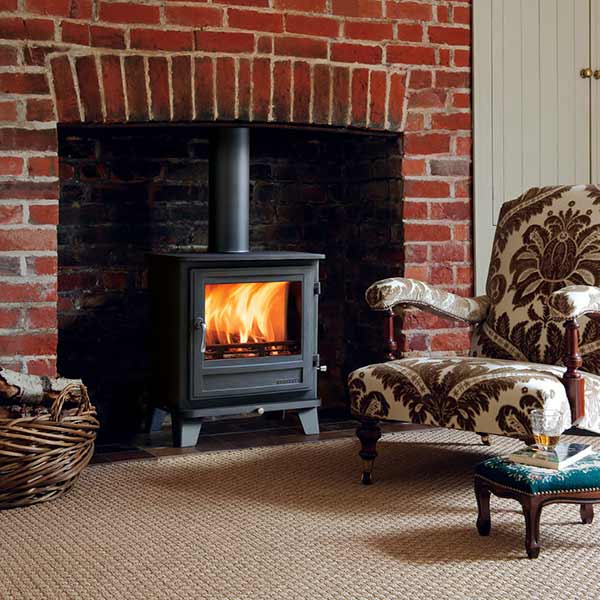
Getting the most out of your stove
How do I clean my wood-burning stove?
Modern, High-Tech stoves require far less work than older models, but it is still important to keep them looking new and functioning at the optimum by cleaning and maintaining them properly.
Cleaning your wood-burning or multi-fuel stove regularly, will make sure you get the most efficient performance and prolong the lifespan of the stove. Follow the instructions and cleaning tips in your stove manual. Here are some tips and easy steps to follow:
Cleaning the outside of the stove
- Let the stove cool down completely before you start cleaning it.
- Wipe the stove with a soft damp cloth. Remove any tough spots with a soft brush. On cast iron stoves you may us a mild abrasive pad or wire wool.
- Keep your stove looking new and fresh by spraying it with colloidal black cleaner. To repair dull areas or small damaged spots, use a heat resistant aerosol paint.
- Empty the ashpan regularly. Leaving the grate in hot ashes can cause it to distort or wear out more quickly.
- Make sure the ash has cooled down completely and that there are no smouldering coals left that can start a fire. Store the ashes in a non-combustible metal container with a tight lid to prevent spillage. Ash is good for your garden and can be worked into the garden beds with your fertilizer. Otherwise, store it safely and dispose in accordance with your city’s regulations.
- Clean the glass window. Although most modern stoves are fitted with an air-wash system to keep the ceramic glass clean, you may still occasionally need to wipe it with crumpled newspaper dipped in malt vinegar, or a specialist cleaning product. Under NO circumstances must you use an abrasive product to clean the glass as it will cause permanent damage.
- Check for rust. This is not a problem you are likely to have with a modern stove, but if it does occur, it is easy to fix early on. Rub the rusted area with wire wool and reapply heat resistant stove paint.
Cleaning the inside of your stove
- At least once, but preferably twice a year, remove the baffle, firebricks, grate and ashpan.
- Clean the baffle, grate and ashpan with a wire brush and wash thoroughly with soap and water. Make sure it is still in good condition.
- Clean the area around the baffle plate of any soot or other deposits. Any build-up will block the airflow and can be potentially dangerous, as it is flammable. It is advisable to check this area more frequently for any build-up.
- Clean the firebricks with a soft brush and wipe down with a damp cloth.
- Loosen the build-up of any soot or creosote on the inside with a brush or scraper and remove all large pieces of debris from the stove.
- Clean all the air intake vents and damper, if one is fitted.
- Vacuum the inside of the stove and wipe it with a damp cloth.
- Return all the parts to their proper positions.
Cleaning and maintaining the rope seal on the door or window
- Clean and check the condition of the rope seal regularly. If it is compressed too much, old or worn, replace it immediately.
- To check the rope seal, do a “paper test.” Place a £5 note or similar size piece of paper between the door and the stove body. Close the door and attempt to pull out the paper. It should stay locked in place, or only be pulled out with a lot of resistance. If you can pull it out easily, the rope seal should be replaced. Repeat this test all the way around the rope seal.
- You can buy a kit from Firehouse or buy a length of the correct diameter rope seal and cut it to the correct length yourself.
- Decide whether to remove the door or replace the rope seal in-situ. If you remove the door, make certain it lines up properly when you replace it. It is not recommended that you remove the door, unless it is really too hard to reach with the door in position.
- The rope seal is usually glued to the inside of the door. Mark the position of any joints and carefully remove the rope and glue, using white spirit to soften it.
- Remove all dirt, dust and grease. Wipe the groove where the new seal must be fitted with white spirit. Tape the ends of the new rope with heatproof tape to prevent fraying.
- Put a thin layer of rope glue in the groove around the edges and carefully insert the new rope seal, pushing it firmly into position with a flat screwdriver, taking care that the rope does not compress or stretch. Make sure that any joints are in the same place as before, using a little extra glue to make sure the ends of the rope join properly.
- Leave the door open for an hour or so for the glue to cure and then carefully close it, checking that it fits correctly. Do the paper test. If it has not been installed correctly, remove the rope seal and replace it carefully, using new rope if necessary. Rather spend a bit of extra time and even money, than run the risk of smoke and carbon monoxide escaping into your home.
- Remove any excess glue with white spirit.
- If the seal between the door and the glass has to be replaced, loosen the retaining clips carefully. Spray with WD40 if they are sticky. Follow the same process as above.
- Lubricate the hinges and locking pins regularly.
Cleaning and maintaining the chimney and flue system
Regularly check the chimney for leaks or build-up of soot and other deposits. It is recommended that you install a stack thermometer on the stove flue as well as a smoke detector.
It is strongly recommended to have wood-burning and multi-fuel stoves and chimneys inspected at least once a year, but preferably twice a year, by a professional stove dealer or chimney sweep. They should check for all signs of deterioration such as cracks, leaks, warping, baffle gaps, and creosote in the chimney. It is a good idea to have your wood stove and chimney inspected before the cold season begins and again just after the peak of winter.
We strongly advise against cleaning the flue or chimney by dragging wire netting, wet bags or tyre chains through them as this will cause serious damage that can often not be seen and will jeopardize your safety and the efficiency of your stove.
Know what your stove can do
Know the limitations of your stove. Do not build a fire that is too hot for the size and type of stove you have. Multi-Fuel stoves are designed to burn both coal and wood, but wood-burning stoves are meant to burn wood only. It is best to burn only seasoned wood. It will provide maximum heat release, use less fuel and reduce the build-up of soot or creosote build-up.
Do not burn green unseasoned wood, driftwood, trash, treated wood, artificial logs, or any product containing zinc, sulphur, lead, or plastics as they will damage the catalytic combustion chamber and cause pollution.
When your stove is not in use for long periods
If you are going away for an extended period, or do not use the stove regularly during summer, leave the stove door slightly ajar. This helps with airflow through the system which will prevent corrosion.
Ask the experts
Firehouse has a team of professionally trained heating experts that are standing by to assist you with advice, stoves, flues and parts for your stoves. Visit our Firehouse showroom.


